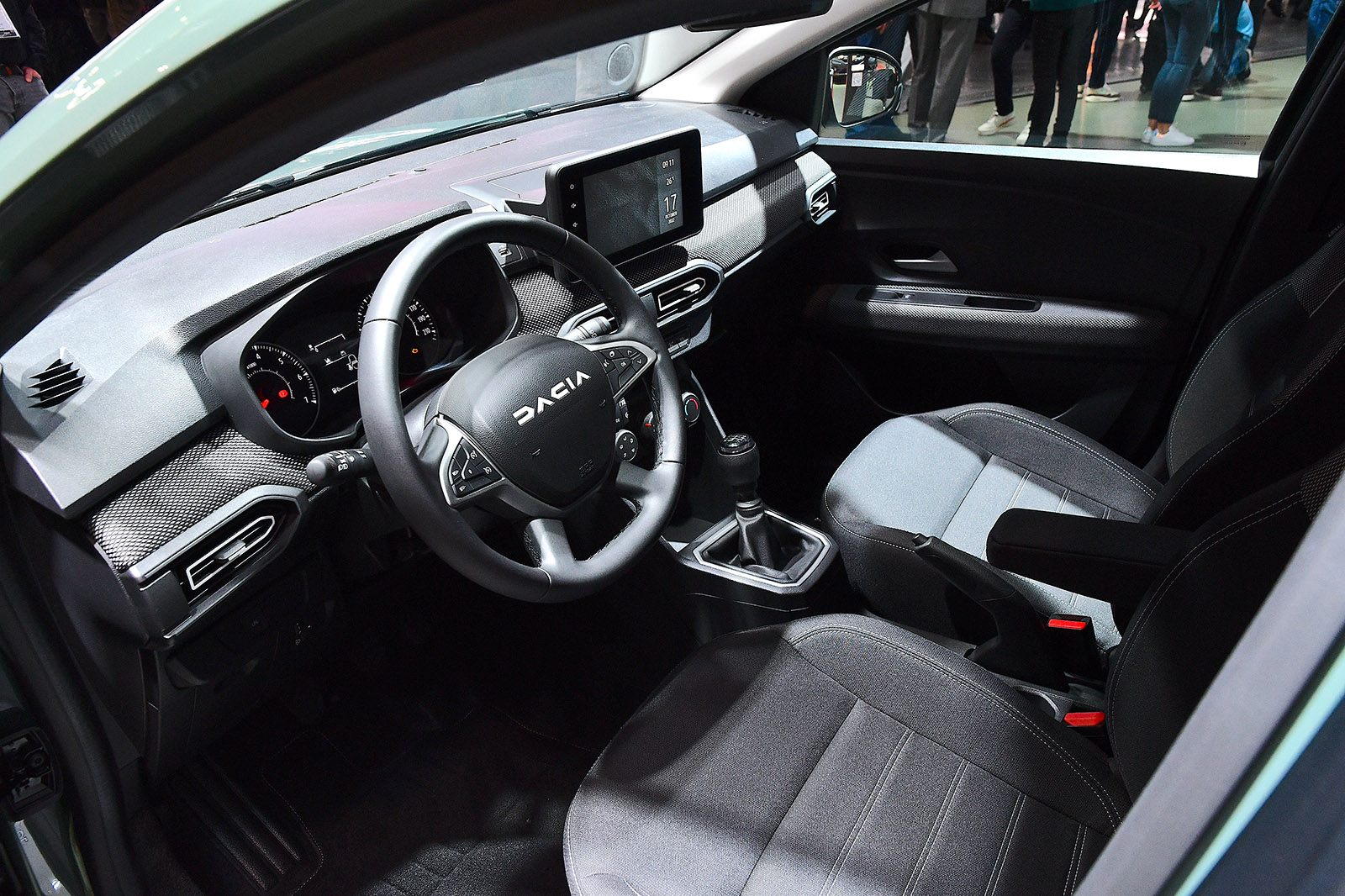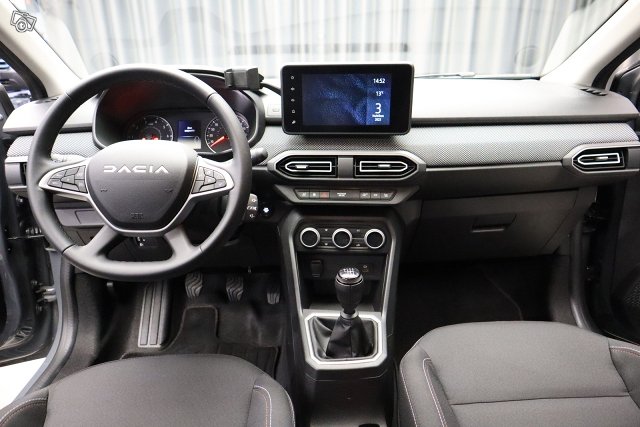The inaugural venture into hybrid cars by Dacia has actually been absolutely nothing except an accomplishment. The Jogger Hybrid 140 has adequate strength, thanks to the support of the electrical motor, and displays remarkable effectiveness that does not come at the cost of usefulness in real-world situations. The Jogger Hybrid is likewise very comfy and geared up with good functions, especially considering its modest prices– a rarity amongst the completely hybrid cars presently readily available in the market.
Nonetheless, the traditional gas version of Jogger stays more affordable, and in a time where funds for car are being restricted to an unmatched degree, it might appear much more enticing to specific clients. As a presentation of Dacia’s technique towards electrification, the Jogger Hybrid is an impressive achievement.
It might look like though Dacia has actually been left in the race towards electrification, thinking about that the brand name has just recently presented its first hybrid design. The vital aspect to bear in mind here is the principle of worth. Let us likewise not forget that Dacia has the Spring, an electrical vehicle (EV) developed for manoeuvring through the busy streets of European cities.
In order to make the acquisition of its automobiles practical for its customers, Dacia has actually chosen petrol-electric propulsion entirely when it considers the innovation to be fairly priced. The Jogger Hybrid 140 acquires its powertrain from Dacia’s sis business, Renault, and has actually been enhanced appropriately.
Commencing from ₤22,595 for the entry-level Expression vehicle and skyrocketing to ₤23,395(with simply 2 trims available on the Hybrid, in contrast to the gasoline variation), Dacia asserts that the Jogger Hybrid lacks a rival. A general glimpse validates this assertion.

For a full-hybrid seven-seater Sports Utility Vehicle (SUV), anticipate to use up ₤40,000 with car manufacturers like Hyundai. While the Toyota Corolla Touring Sports is priced at ₤31,545, it just includes 5 seats, rendering it substantially less flexible than the Jogger.
The tried-and-tested Renault innovation includes a 1.6-litre gas engine, enhanced by a 1.2 kWh battery and a duo of electrical motors. Among these motors is a traction motor that enables the Jogger to run on electrical energy (as much as 80% of the time in city locations and at speeds approximately 43 miles per hour), while the other motor is a starter-generator that fires up the gas engine and charges the battery by using the 1.6 system while driving.
The electrical motors are incorporated into a multi-modal automated transmission that moves the front wheels. It isn’t the most vital element here, the 0-62 miles per hour velocity time is 10.1 seconds. What is more intriguing is the Jogger’s asserted fuel effectiveness of 56.5 mpg. This is a remarkable figure and 7.8 mpg higher than the pure-petrol design. Throughout our assessment, we exceeded this number, with the journey show signing up almost 70 mpg.
Driven in an unwinded way, the Jogger Hybrid shows amazing performance and relatively excellent improvement. Throughout typical travelling, the gas engine triggers to keep the state of charge at an optimum level, with the electrical motor supplying a substantial part of the propulsion.
When both electrical and fuel source of power operate in unison, a humming noise originates from underneath the bonnet. In addition, our trial vehicle was prone to a resonant rattle originating from the engine compartment. This small absence of improvement just ends up being a problem when asking for velocity on a high slope when the engine sounds stretched. With 7 individuals and luggage, this element might be more common.
The powertrain is primarily smooth, with the electrical motor’s periodic bursts of extra torque helping in equipment modifications and supplying a helpful additional increase of velocity at low to medium speeds when the accelerator is pushed. It is this help that shows helpful in city settings, and the Jogger’s straight-line efficiency suffices.
Albeit the regenerative set-up’s braking feel exists, it is undependable and usually, even a mild touch of the brake pedal sets off an abrupt reaction from the brakes. The transmission has an extra B mode, which commands more energy back into the battery when decreasing. No matter the mode, the Jogger’s small 1.2 kWh system renews quickly.
The system is attached where an LPG-equipped Jogger’s ancillary tank lies, albeit this alternative is not provided in the UK. The battery uses up the area that the extra wheel inhabits in ICE variations, symbolizing there is rarely any compromise when it pertains to functionality compared to its pure-petrol equivalent. Sufficient legroom is offered in the 3rd row of seats, though it is not the most uncomplicated path to access them.

The 2nd row is more extensive, offering adequate leg and headroom, and the boot area is 212 litres with all rows of seats in location, 699 litres in five-seat mode (with the 3rd row folded, however it is simple to eliminate them totally), and a van-like 2,085 litres when enhanced for optimum bring capability. The only disadvantage is the hauling limitation, which drops from 1,200 kg to 750 kg for this Hybrid 140.
The additional mass of the battery is unnoticeable, and the cars and truck manages with a good deal of composure. The steering is completely weighted for the Jogger’s size, supplying self-confidence on winding roadways and ease of usage in the town, characterizing the cars and truck. It is simple to drive and simple to drive resourcefully.
It is supported by a chassis that mainly takes in bumps well. The irregular tarmac on the Portuguese test path is an exceptional approximation of the rough back roadways and irregular city streets come across in the UK, and while there is some sound originating from beneath Dacia’s chassis in the method it deals with surface area flaws, the wheels never ever rebound roughly, although the trip can periodically feel somewhat disconcerting on extremely irregular roadways.
All lorries are geared up with an eight-inch touchscreen system with Apple CarPlay and Android Auto, with integrated sat-nav consisted of in the Extreme SE designs. The system likewise consists of a reversing video camera on all designs, while rear parking sensing units are likewise consisted of. The Hybrid 140 includes a seven-inch digital dash that is distinct to it (it is fairly priced, however it might provide more versatility in its display screen), and it likewise consists of cruise control, keyless entry, and auto air-con. In addition, it has many USB ports to keep one’s innovation charged.
Extreme SE designs include heated seats, black 16- inch alloy wheels and door mirrors, and downplayed Extreme SE graphics. There is likewise the choice of a brand-new Shadow Grey paint colour that is exclusively readily available on the Hybrid.

It deserves discussing security as Dacia has actually gotten criticism in the past, however the brand name just equips its cars with devices that it thinks purchasers desire and is vital for the marketplace. Therefore, while the Jogger might not consist of the current sophisticated driver help innovation, even the base Expression design has self-governing emergency situation braking, blind-spot caution, and 6 air bags.
If a worth is what you look for, the Jogger Hybrid’s representative financing offer on the base cars and truck is ₤327 down and ₤327 monthly (a four-year offer, 6k miles each year).
Undoubtedly, the performance capacity is strong. Returning to Dacia’s initial assertion that the Hybrid 140 has no competitors, we are not completely encouraged. In truth, the most substantial competitors originates from within in the type of the Jogger TCe 110 fuel, which is ₤ 4,150 more affordable trim-for-trim. It is not as cost-effective, the cost savings made might acquire considerable.
The marvelous Jogger Hybrid 140 from Dacia, an Extreme SE marvel of engineering priced at ₤23,395 At its core lies a 1.6-litre four-cylinder fuel hybrid engine, which imparts a powerful power of 138 bhp and a torque of 144 Nm.
This magnificent device includes a multi-mode automated transmission, moving its front-wheel drive with quick dexterity. In simply 10.1 seconds, the Jogger Hybrid 140 can rise from 0-62 miles per hour with a leading speed of 110 miles per hour, making it a real speedster’s pleasure.
But wait, there’s more! The Jogger Hybrid 140 boasts a remarkable economy/CO2 balance of 56.5 mpg/112 g/km, making it an accountable option for the eco-conscious. It’s now readily available for sale, so take the opportunity to have this spectacular production!
.


